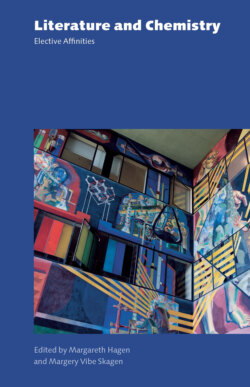Читать книгу Literature and Chemistry - Группа авторов - Страница 7
На сайте Литреса книга снята с продажи.
CHEMISTRY AND LIFE-WRITING
ОглавлениеThe professional chemist and internationally acclaimed novelist and essayist Primo Levi wrote extensively on chemistry, and remains the twentieth century’s most persuasive example both of combined literary and scientific craftsmanship and of literature and chemistry as a relevant field of literary studies:
Chemistry is the art of separating, weighing, and distinguishing: these are three useful exercises also for the person who sets out to describe events or give body to his own imagination. Moreover, there is an immense treasure of metaphors that the writer can take from the chemistry of today and yesterday, which those who have not frequented the laboratory and factory know only approximately. […] Even a layman knows what to filter, crystallize, and distil means, but he knows it only at second hand: he does not know “the passion infused by them”, he does not know the emotions that are tied to these gestures, has not perceived the symbolic shadow they cast. (Levi, p. 175)
The present volume’s first section, Literature and Chemical Sensitivity: Primo Levi, is dedicated to the author of The Periodic Table (1975). In “Primo Levi’s Chemical Sensorium”, Robert S. C. Gordon expands the general view that Levi’s distinctive writing style and his achievements as a witness to the Holocaust is rooted in the rational, analytical clarity of the scientist and of the experimental chemist in particular. Gordon demonstrates how Levi’s Periodic Table, a series of essays and science-fiction narratives, are built as much on the sensory complexity and responsiveness of the chemist’s contact with matter as it is on cool detachment. It is made clear that Levi develops key dimensions of his ethical worldview out of this chemical dimension of sensory contact.
Margareth Hagen’s chapter, “Autobiography and Chemistry: Primo Levi and Oliver Sacks”, addresses the use of chemistry in the aforementioned semi-autobiographical work Il sistema periodico. She explores the analogy Levi develops between practical chemistry and creative writing and demonstrates how his tales about chemistry represent the qualities of this science, characterised as knowing by making, highly dependent on narrativisation, and constantly involved in problems of identifying, classifying, and naming matter. Levi’s rhetoric, narrativisation, and ethics of chemistry are compared with its representation in the more recent autobiography of Oliver Sacks, Uncle Tungsten: Memories of a Chemical Boyhood (2001).
Section two, From the Literary Lives of Two Epochal Scientists: Humphry Davy ans Ludwig Boltzmann, begins with Sharon Ruston’s chapter “From ‘The Life of the Spinosist’ to ‘Life’: Humphry Davy, Chemist and Poet”. Few people know that Humphry Davy (1778-1829), the foremost chemist in Britain in the nineteenth century, who found fame for his invention of the miner’s safety lamp and who isolated more chemical elements than any other individual in history, also wrote more than a hundred poems over the course of his life. He revised one poem at least four times, extending and developing it with each revision, and finally printing it anonymously twice within his lifetime. Sharon Ruston’s close reading of this poem tracks the changes it undergoes and reveals developments in Davy’s character, as the poem evolves from a youthful materialism to a more orthodox Christianity.
The following chapter by George Rousseau is entitled “An Unlikely Candidate for Literature and Science: The Nostalgic Ludwig Boltzmann in Eldorado”. The Austrian Ludwig Boltzmann (1844-1906) was one of the foremost theoretical physicists of the late nineteenth century and a pioneering theorist of chemical gases, remembered for his founding contributions to the fields of statistical mechanics and statistical thermodynamics. He was one of the most important advocates for atomic theory at a time when it was still highly controversial. Based on Boltzmann’s end-of-life confessional narrative, Journey to Eldorado, which is presented as a kind of modernist life-writing, blending autobiography, memoir, travelogue, and scientific commentary, this chapter retells the story leading up to the famous scientist’s suicide in 1906. George Rousseau recreates the specific stress that caused Boltzmann’s death, contextualises it biographically and historically, and asks what difference its identification makes to future interpretations of his biography.
Unsurprisingly, these four first chapters – dealing with authors who were or are primarily professional scientists and/or chemists – are all centred on life-writing: the biographical intertwining of scientific practice and theorisation with subjective perception, emotional and psychological development, self-understanding, and understanding of the world. Whether it is the correlation between Primo Levi’s practical experience as a chemist and the sensitivity and ethics of his writing; the chemical childhood of Oliver Sacks; the evolving philosophical and religious orientation of Humphry Davy; or the story of Ludwig Boltzmann, a victim of the ongoing intellectual war between atomists and energeticists and his own depressive nostalgia – they show, as George Rousseau emphasises in his contribution, how the lived lives of literary and scientific figures can play significant roles in evolving literature and science studies.
